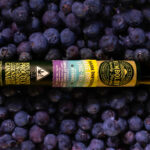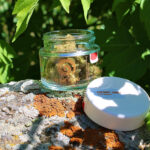Brands long have recognized the importance of packaging as a means of conveying their ethos, brand promise, and moral compass. Packaging plays a significant role in how consumers perceive and interact with brands—especially cannabis brands. The right packaging can evoke a sense of quality, sustainability, and even social responsibility. How can brands convey their essence through their packaging? Here are solutions to some of the packaging dilemmas brands face today.
Types of packaging and materials
Packaging comes in a wide variety of forms, from folding cartons and rigid boxes to flexible bags and glass jars. The type of packaging a brand chooses to use can send a message about its values and priorities. For example, a company that values sustainability may opt for packaging made from recycled or biodegradable materials, while a luxury brand may choose more expensive earth-friendly materials such as glass or tin to convey a sense of quality.
The cannabis packaging market is expected to triple in size over the next three years. Today, about half of all cannabis packaging in the marketplace is made from plastic, which is seen as environmentally unfriendly. The balance of cannabis packaging primarily utilizes glass, followed by tin and paper—materials considered more sustainable.
Sustainability
Sustainability is a crucial consideration in packaging design. Consumers are increasingly aware of packaging’s impact on the environment, and many seek brands that prioritize sustainability. More than 75 percent of consumers say they consider sustainability when making a purchasing decision, and nearly 90 percent say they would be willing to spend more for sustainable products. Implementing a responsible, sustainable packaging plan makes good business sense and is kinder to the environment.
Sustainable packaging options include biodegradable, compostable, and recyclable materials. Biodegradable materials break down naturally in the environment, while compostable materials break down into a nutrient-rich soil additive. Recyclable materials can be repurposed into new products, reducing waste.
Challenges brands face when implementing sustainable packaging include cost, availability, and consumer behavior. Sustainable materials can be more expensive than traditional materials, and some markets may experience limited availability. Consumer behavior also can be a challenge, as not all consumers know how to dispose of sustainable materials properly. Brands can overcome these challenges by partnering with suppliers and recycling facilities, educating consumers about sustainable packaging, and offering incentives for eco-friendly behavior.
Upcycling and recycling
Upcycling and recycling are two methods brands can use to reduce waste and extend the life of their packaging. Upcycling involves repurposing packaging into new product containers, while recycling breaks down packaging into its raw materials and creates new products.
Brands can use upcycling and recycling to convey their commitment to sustainability and social responsibility. Upcycling can be an effective way to create unique designs that continue to live in the home and promote the brand long after the product is gone. Recycling can reduce the amount of waste in landfills and conserve natural resources.
Topical concerns and considerations
Packaging design is not only about aesthetics. It also reflects the values and priorities of the brand. Today’s consumers are increasingly concerned about the impact of packaging on the environment and seek brands that prioritize sustainability. Brands that fail to address these concerns risk losing customers and damaging their reputation.
Brands also must be aware of regulatory environments and how they impact packaging design. Regulations governing packaging vary by state and often impact the materials and graphic elements brands can use, as is the case with Vermont’s single-use products law (Act 69 of 2019) that bans many traditional uses for plastic bags, straws, stirrers, and expanded polystyrene. New York also follows sustainable packaging requirements, spurring cannabis packaging companies to design and develop more sustainable products.
The right packaging can convey a sense of quality, sustainability, and social responsibility. Brands that prioritize sustainable packaging, upcycling, and recycling can attract environmentally conscious consumers and reduce their carbon footprint.
To overcome challenges with implementing sustainable packaging, upcycling, and recycling, brands can partner with suppliers and recycling facilities, educate consumers about sustainable packaging and disposal methods, and offer incentives for eco-friendly behavior.
Brands that invest in their packaging—and packaging strategy—will reap rewards, benefit the planet, and lift the cannabis industry’s overall reputation.
















[…] say you can’t judge a book by its cover, but packaging often makes or breaks retail sales. Brands spend months cultivating gorgeous flower and crafting delectable edibles or high-tech […]
[…] Web, but LeafLocker’s capabilities really shine in samples crafted for its EcoPro line. The sleek die-cut boxes embossed with spot-gloss-coated flowers are an exercise in elegance that practically begs to be […]
[…] just implementing adult-use laws, and states were grappling with basic issues like how to regulate packaging and standardized dosages. The vast majority of markets were medical-only, with relatively low […]
[…] of the effort you put into growing high-quality plants can be rendered irrelevant if you aren’t packaging and storing products the right way. Packaging companies are providing growers with new ways to […]
[…] labs. Consumers have flocked to listing platforms to leave rave reviews for the shop’s prices, packaging, and customer service. Wonderland also has its own parking lot for customers, which is a welcome […]
[…] are the biggest variable you control as a business owner. Packaging’s too expensive? You can find a new supplier, switch from tins to mylar bags, or move from glass to plastic tubes. […]
[…] “When you have 350 other dispensaries in this region that are differentiating a little around price or aesthetic but not really doing anything substantively different, we saw an opportunity to go in there and […]
[…] Packaging has been a critical component of commerce for millennia. From the earliest days of trade and barter, people have used a variety of materials to package and transport goods and effectively differentiate them from competitors. […]